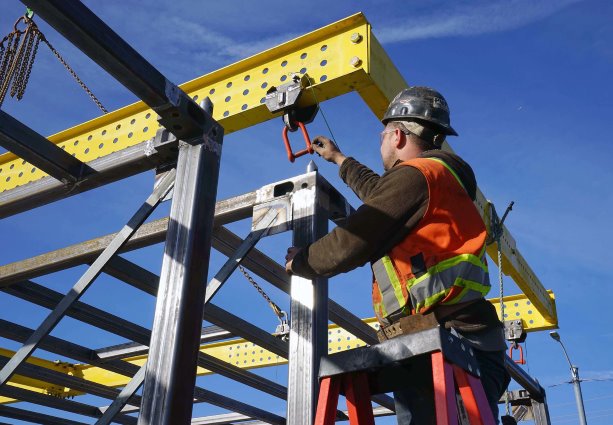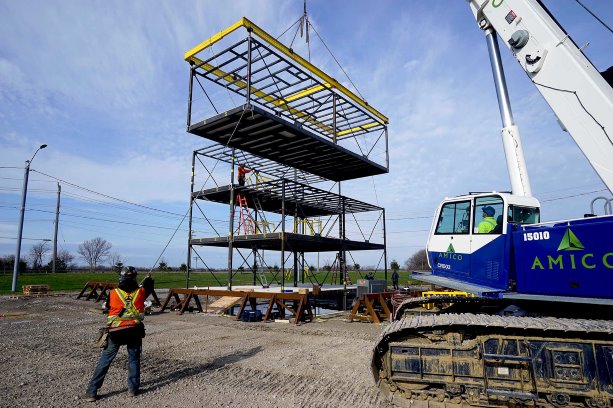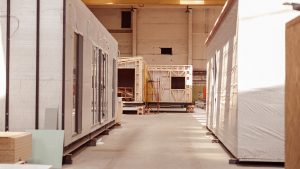Modular construction has been heralded as a method to speed construction and reduce costs. It’s much more than that, says Julian Bowron, founder of Toronto-based Vector Praxis, the developers of the VectorBloc modular construction system.
"VectorBloc reduces disruption to urban life by simplifying the construction process and reducing the construction footprint," he says. "It reduces vehicle, lift and crane movements, and reduces site staffing and the need for onsite facilities."
Inspired by the standardized ISO corner system used to lift and lock ocean freight containers, the VectorBloc system was designed from the ground up to meet exacting tolerances and encourage simplified construction.
"The connection system is made up of about 30 different steel castings, obviously distinct from cast iron," says Bowron.
"Typical modular construction products tend to hit a ceiling of between five and 10 storeys, due to the effects of tolerance accumulations and a lack of structural capacity. Assembled and properly engineered, there should be no reason why these load-bearing modules couldn’t be used to build structures of 40 storeys and beyond."
Under the VectorBloc business model, Vector Praxis produces the modules that form the building framework. These are sold to licensees who finish the floors, walls and interiors to approximately 95 per cent factory completion according to the building design. These near-completed modules are then transported to the site and assembled.
"Typically, the foundation and podium of the building will employ conventional construction," says Bowron.
"Our system includes the equipment required to assemble the modules on top of the podium. We use a crawler crane and what we call the VectoRig halo, an interface that attaches perfectly to the modules, which are then hauled into place."
The modules are then locked together using vertical bolts.
"With conventional steel frame or concrete construction, you might expect to construct a floor per week," says Bowron.
"With VectorBloc, we target a construction speed of one floor per day, and each floor can be occupied the moment it’s been secured."
The modules are designed to attach curtain walls using the Vectorloc sealing system, providing a framework for precision-fit curtain wall installations that range from whole brick to brick veneer, and brick or precast concrete facade panels.
Real world projects include a 3,600-square-foot, four-storey test stack made of eight modules. Built at the site of partner company JMC Steel Group’s Atlas Tube plant in Harrow, Ont., construction was completed in just four hours. The test bed will be employed to perform engineering tests, to confirm the compatibility of new modules and to examine various approaches to detailing.
The first building constructed by a licensee will be built in 2016 by Connexio Building Systems in Windsor.
"It’s an eight-storey, 140-unit retirement home, to be built using 350 modules," says Bowron. "Interestingly the only limitation on the speed of construction will be the speed at which the factory can finish the modules."
Bowron says that other potential clients have shown interest in VectorBloc projects that include hotels, health care centres, schools, data centres, and structures that would house mining, chemical and energy industry equipment.
"We had one potential client consider VectorBloc for a sporting event athlete’s village," he says. "They were considering dismantling the building after the event and then reassembling it at another site to be used for public housing."
Bowron notes that the VectorBloc system is best suited to designs incorporating a large number of rooms. For building designs involving large, open spaces, conventional construction might be the preferred method.
"However, on the most compatible projects, VectorBloc is very competitive with cast-in-place concrete and traditional steel construction," he says. Bowron spoke at Construct Canada 2015 in Toronto.









Recent Comments
comments for this post are closed